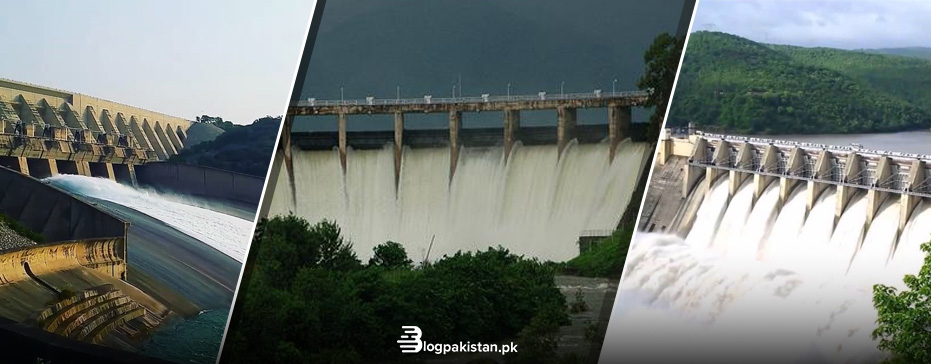Pakistan is home to several notable dams that play crucial roles in the country’s water management, irrigation, and hydroelectric power generation. These dams are strategically located across various regions and harness the flow of major rivers such as the Indus, Jhelum, and Kabul.
Each dam serves specific purposes, from providing water for irrigation and drinking to generating substantial hydroelectricity. Understanding these dams and their locations offers insights into Pakistan’s efforts to harness its water resources efficiently.
10 Famous Dams of Pakistan and Their Location
Below is the list of famous dams in Pakistan. These dams contribute significantly to the country’s agricultural productivity and energy needs.
- Tarbela Dam
- Mangla Dam
- Warsak Dam
- Mirani Da,
- Kanpur Dam
- Satpara Dam
- Gomal Zam Dam
- Diamer Bhasha Dam
- Neelum Jhelum Hydro Power Plant
- Rawal Dam
1. Tarbela Dam
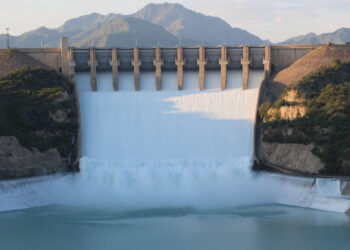
The Tarbela Dam, located near Swabi and 105 km northwest of Islamabad, is the largest earth-filled dam in the world and the second-largest in structural volume after China’s Three Gorges Dam. Constructed on the Indus River, the dam’s primary purposes are water storage for irrigation and electricity generation. Its construction began in 1968 and was completed in 1976 at a cost of $1,497 million. The dam stands 143 meters (470 feet) high and stretches 2,743.2 meters (9,000 feet) long. It has a total capacity of 13.69 cubic kilometers, covering a construction area of 168,000 square kilometers.
It is the biggest dam of Pakistan with a storage capacity of 11.1 million acre-feet (MAF), and its maximum elevation is 1,550 feet. Tarbela Dam is crucial for Pakistan’s hydroelectric power, housing 17 water turbines that generate a total of 4,888 megawatts, accounting for around 70% of the country’s hydroelectric power. This significant structure not only supports irrigation but also plays a vital role in the nation’s power supply.
2. Mangla Dam

The Mangla Dam, located in the Mirpur district of Azad Kashmir, is the ninth-largest in the world. It is built on the Jhelum River and named after the nearby village of Mangla. This dam was constructed in 1967 with funding from the World Bank, costing approximately $1.473 billion. It stretches 3,140 meters (10,302 feet) in length and stands 147 meters (482 feet) tall. It has a water storage capacity of 7.39 million acre-feet (MAF).
Mangla Dam plays a crucial role in the Indus Waters Treaty between Pakistan and India. It serves as a key water reservoir and contributes significantly to irrigation and power generation. The dam’s ten turbines have a combined capacity to produce 1,310 megawatts of electricity, providing essential power to the surrounding areas.
3. Warsak Dam
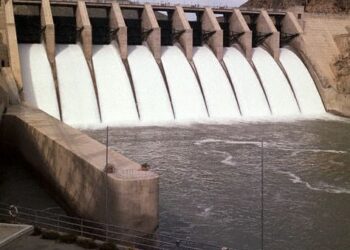
Warsak Dam, located on the Kabul River northwest of Peshawar, is a notable concrete dam constructed in two phases. The first phase was completed in 1960, and the second phase took place from 1980 to 1981. The dam stands 76.2 meters (250 feet) tall and is 140.2 meters (460 feet) long, with a construction cost of 156 million rupees. The project was financed by the Canadian government. The Warsak Dam Hydropower Project has an installed capacity of 243 megawatts (MW) of electricity.
The dam’s capacity is being enhanced to meet increasing energy demands. The government is currently rehabilitating the dam with financial assistance from Germany, which is loaning 40 million euros for this purpose. This rehabilitation aims to upgrade the aging infrastructure to ensure it continues to effectively meet the region’s power needs. Also, get some information about Best Construction Companies in Pakistan.
4. Mirani Dam
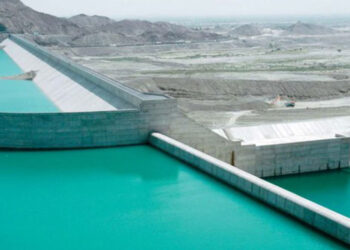
Mirani Dam, located on the Dasht River in the Kech District of Balochistan, was completed in 2006. It was commissioned by Pakistan’s Water and Power Development Authority (WAPDA) in 2001 and constructed by Descon Engineering Limited. This dam was built to provide water for Gwadar city. The dam receives its water from the Kech and Nihing rivers, creating a reservoir with a capacity of 302,000 acre-feet (373,000,000 cubic meters). The project cost 5,267.90 million rupees and serves multiple purposes, including agriculture and flood protection.
The primary purpose of Mirani Dam is to support agriculture in the Kech Valley, which has cultivable soil but requires a constant water supply. The dam also ensures a steady supply of clean drinking water to the towns of Turbat and Gwadar throughout the year. Notably, Mirani Dam is considered one of the largest dams in the world in terms of flood protection volume. The structure is 39 meters (127 feet) high and 1,020 meters (3,350 feet) long, with a flood storage capacity of 588,690 cubic hectometers. This makes it a critical infrastructure project for both irrigation and flood management in the region.
5. Khanpur Dam
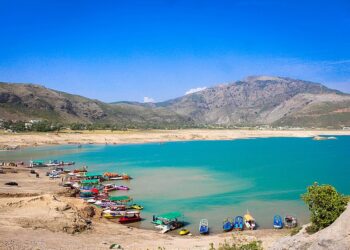
Khanpur Dam, located on the Haro River in Tehsil Khanpur, was completed in 1983 after a 15-year construction period. The dam, which cost Rs. 1,352 million to build, stands 167 feet (51 meters) high and can store 110,000 acre-feet (140,000,000 cubic meters) of water. Its primary purpose is to supply drinking water to Islamabad and the surrounding areas, including Haripur, Attock, and Rawalpindi. In addition to drinking water, the dam also provides irrigation water to these regions.
Khanpur Dam is also a popular tourist destination known for its picturesque green and blue waters. It attracts visitors who enjoy activities such as cliff jumping, jet skiing, kayaking, and camping. Read more about Best Engineering Field in Pakistan.
6. Satpara Dam

Satpara Dam, an earth-filled dam located 4 km from Skardu Valley in Gilgit-Baltistan, is a crucial infrastructure project based on the natural reservoir of Satpara Lake. Construction started in April 2003 and was completed in phases until 2013. It generates 17.36 MW of hydroelectricity, providing power to about 30,000 households in the Skardu Valley.
Satpara Dam not only serves as the primary source of electricity and freshwater for Skardu Valley but also enlarges Satpara Lake. The construction of the dam was supported through an Enhanced Partnership Agreement between the United States Agency for International Development (USAID) and the Government of Pakistan.
7. Gomal Zam Dam
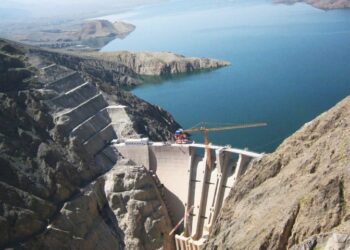
Gomal Zam Dam, located in the South Waziristan Agency, became operational in 2011. The dam, which receives its water from the Gomal River, a tributary of the Indus River, serves multiple purposes, including irrigation, flood control, and hydroelectric power generation. Construction of the roller-compacted concrete (RCC) gravity dam began in August 2001 and was completed in April 2011, with the powerhouse units becoming operational by August 2013. The dam stands 437 feet (133 meters) high and has a gross storage capacity of 1,140,000 acre-feet (1.41 km³). It generates 17.4 MW of electricity and irrigates about 163,000 acres (660 km²) of barren land in the Tank district and Tehsil Kulachi of Dera Ismail Khan.
This dam was officially inaugurated on September 12, 2013, by key government officials and the dam plays a crucial role in the region by providing hydroelectric power, supporting irrigation, and controlling floods.
8. Diamer Bhasha Dam
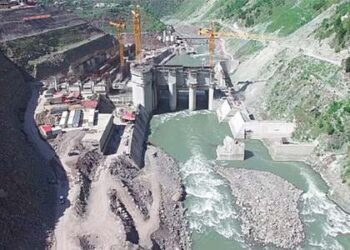
The Diamer-Bhasha Dam is currently under construction on the Indus River in Gilgit-Baltistan. It is set to become the world’s highest roller-compacted concrete (RCC) dam. The foundation stone was laid by Prime Minister Yousaf Raza Gillani on October 18, 2011. Once completed, this concrete-filled gravity dam will generate 4,500 MW of hydroelectricity. It will also provide significant water storage capacity, holding 8,500,000 acre-feet of water for drinking and irrigation purposes, and help control flood damage during high floods on the Indus River. Additionally, the dam is expected to extend the life of the Tarbela Dam by 35 years.
The Diamer-Bhasha Dam will feature 14 gates and stand at a height of 272 meters. Its reservoir will have a gross capacity of 8,100,000 acre-feet (10 km³) and a live storage capacity of 6,400,000 acre-feet (7.9 km³).
9. Neelum Jhelum Hydro Power Plant
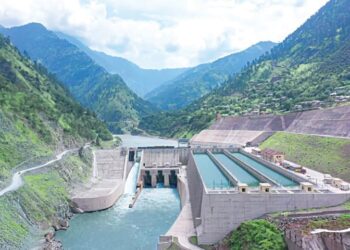
The Neelum-Jhelum Hydropower Plant is a run-of-the-river hydroelectric project in Azad Jammu and Kashmir, located about 42 km south of Muzaffarabad. This plant is uniquely designed to divert water from the Neelum River to a power station on the Jhelum River, generating 969 MW of hydroelectricity. Construction began in 2008 after a Chinese company won the contract in July 2007. Despite numerous delays, the first generator became operational in April 2018, and the project reached its full capacity of 969 MW by August 2018.
The Neelum-Jhelum Hydropower Plant is a significant addition to Pakistan’s energy infrastructure. As a relatively new dam, it stands as a landmark achievement, providing a vital source of renewable energy to thousands of people in the region.
10. Rawal Dam
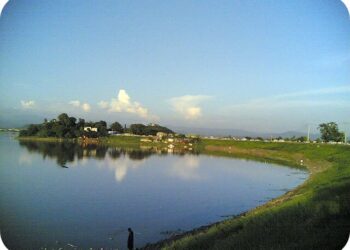
Rawal Dam, one of the most notable dams in Pakistan, is located in Islamabad. Constructed to supply water to the twin cities of Islamabad and Rawalpindi, the dam’s construction began in 1962. It has a water storage capacity of around 42,000 acre-feet.
In addition to its functional role, Rawal Dam is a popular recreational destination. Visitors enjoy a variety of activities, such as horseback riding, boating, and fishing. The area around the dam is also a favored picnic spot for families, providing a scenic and enjoyable environment for leisure and outdoor activities.
To Conclude
Exploring the array of dams in Pakistan provides a comprehensive understanding of the country’s water management and energy infrastructure. Each Pakistan dam plays a vital role in irrigation, flood control, and hydroelectric power generation. These dams, strategically located across Pakistan’s diverse landscapes, reflect the nation’s commitment to harnessing its natural resources for sustainable development.
Enhancing our general knowledge about dams in Pakistan illuminates their significant contributions to the nation’s economic growth and environmental sustainability.
FAQs
Q1. How many dams are there in Pakistan?
Ans. The total dams in Pakistan are 150.
Q2. What are the names of dams in Pakistan?
Ans. Here is the list of top Pakistan dams:
- Tarbela
- Mangla
- Rawal
- Warsak
- Mirani
- Khanpur
- Satpara
- Diamer Bhasha
- Gomal Zam
- Neelum Jhelum Hydro Power Plant
- Hub
Q3. Which is the most famous dam in Pakistan?
Ans. Tarbela Dam, situated in Pakistan, stands as the world’s largest fill-type dam. It is positioned on the Indus River near the town of Tarbela in the Haripur District. This dam is celebrated for its scale and strategic importance in the country’s water management and hydroelectric power generation.
Q4. Which dam is an arch in Pakistan?
Ans. Gomal Zam Roller Compacted Concrete (RCC) Arch-Gravity Dam is currently the sole arch-type RCC dam in Pakistan. Its design leveraged local topographical and geological conditions to maximize reservoir capacity while minimizing the volume of the dam structure.
